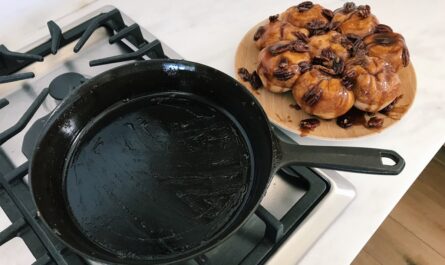For those passionate about making sushi, understanding the hangiri wooden bowl benefits is essential. A hangiri is a traditional Japanese wooden bowl that plays a crucial role in preparing sushi rice, an integral component in sushi-making. This article aims to explore the myriad benefits of using a hangiri, and why it is a staple in the kitchens of sushi enthusiasts worldwide.

The Origins of the Hangiri
The hangiri has been a part of Japanese culinary tradition for centuries. Traditionally made from cypress wood, these bowls are used to mix and cool rice, specifically sushi rice. The unique properties of the wood help absorb excess moisture from the rice, which is vital for achieving the perfect texture and flavor.
Key Benefits of Using a Hangiri
Moisture Absorption
One of the primary hangiri wooden bowl benefits is its ability to absorb moisture. The wooden material of the bowl naturally draws out excess water from the rice, ensuring it is neither too wet nor too dry. This is crucial for achieving the ideal consistency needed for sushi rice.
Aiding in Cooling
The design of the hangiri allows for the rice to be spread out evenly, facilitating quicker and more even cooling. This helps in maintaining the perfect texture of the rice, a key element in sushi preparation.
Enhancing Flavor
The subtle fragrance of the cypress wood can enhance the flavor of the rice. This natural enhancement is something that metal or plastic bowls simply cannot replicate.
Comparing Hangiri with Other Bowls
While there are various types of bowls available for cooking, a hangiri stands out due to its unique properties. Unlike metal bowls, which can react with vinegar and alter the taste of the rice, the wooden hangiri maintains the integrity of the rice’s flavor.
How to Use a Hangiri
Using a hangiri is fairly straightforward. After cooking the rice, it is transferred to the hangiri where it is mixed with sushi vinegar. The rice is then spread out evenly to allow it to cool. For a detailed guide on how to prepare sushi rice, you can refer to this [sushi and rice preparation guide](https://sushiandrice.com/origin-of-sushi-rice/).
Maintaining Your Hangiri
To ensure the longevity of your hangiri, proper care is essential. It should be thoroughly dried after each use to prevent mold. Additionally, occasionally oiling the wood will maintain its quality and appearance.
The Cultural Significance of the Hangiri
Beyond its functional benefits, the hangiri holds cultural significance in Japanese cuisine. It is a symbol of tradition and excellence in sushi making. For those interested in the cultural aspects of sushi, exploring the [history of sushi rice](https://sushiandrice.com/tea-ceremony-rice-origins/) can offer deeper insights.
Why Every Sushi Lover Should Own a Hangiri
For anyone serious about making sushi at home, a hangiri is a worthwhile investment. Not only does it improve the quality of your sushi rice, but it also connects you to a rich culinary tradition.
Finding the Right Hangiri
When purchasing a hangiri, ensure that it is made from high-quality wood. Authentic Japanese hangiris are often made from cypress or cedar, known for their excellent moisture absorption properties.
Alternative Uses of a Hangiri
While primarily used for sushi rice, a hangiri can also be used for mixing salads or other dishes that require gentle handling.

Frequently Asked Questions
What size hangiri should I buy?
The size of the hangiri depends on how much rice you typically prepare. For small households, a 30cm diameter bowl is usually sufficient.
Can I use a metal bowl instead?
While metal bowls can be used, they do not offer the same moisture absorption and flavor enhancement as a wooden hangiri.
How do I store my hangiri?
Store your hangiri in a dry place. Avoid stacking heavy items on top of it to maintain its shape.
For more information on different types of rice and their uses, visit this [comprehensive guide on rice varieties](https://www.metropolitan-market.com/learn/rice-types-101) nofollow.
In conclusion, the hangiri wooden bowl is more than just a kitchen tool. It’s a bridge to the rich culinary traditions of Japan, enhancing not only the taste but also the experience of making sushi.
This article contains affiliate links. We may earn a commission at no extra cost to you.




